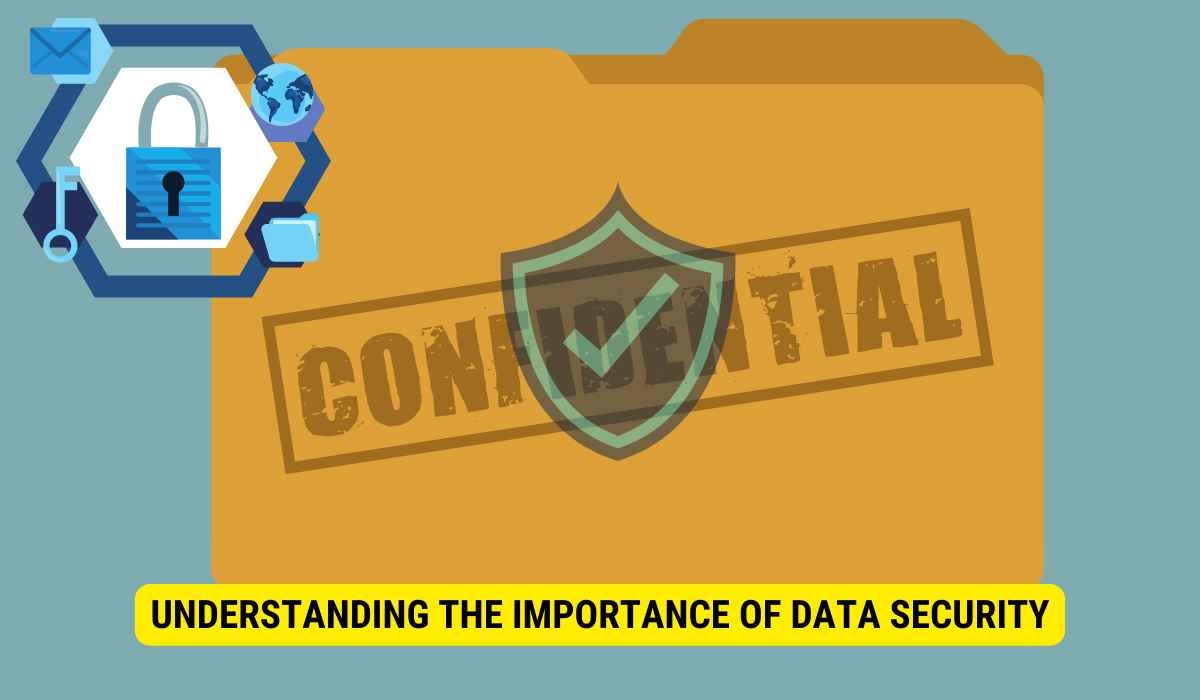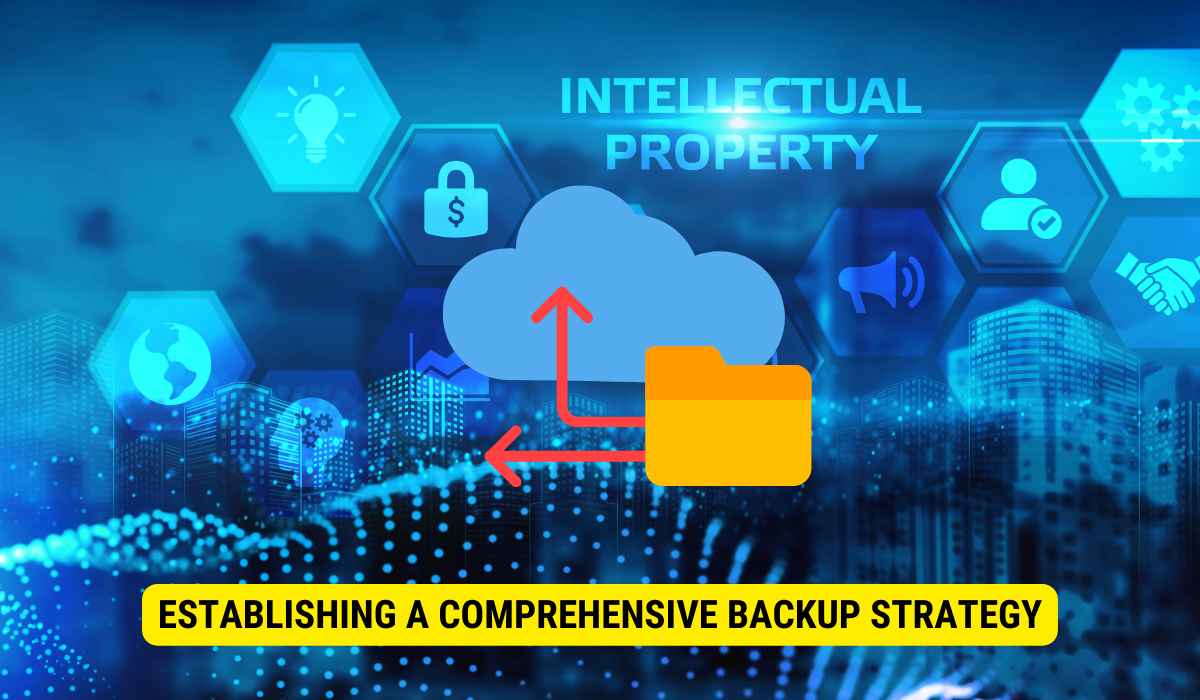To ensure the security of data against hackers, three essential steps are:
-
Implementing strong authentication measures.
-
Regularly updating and patching systems.
-
Establishing a comprehensive backup strategy.
Data security has become a dominant concern for individuals and establishments in today’s rapidly evolving technological landscape. The proliferation of cyber attacks highlights the increasing vulnerability of digital assets and the need for robust measures to protect sensitive information. I will explore three crucial steps that can help ensure data security against hackers.
Understanding the Importance of Data Security
Data, in the digital age, has become a precious commodity. Data’s value, from personal details to financial transactions and intellectual property, cannot be overstated. This recognition underscores the need for comprehensive security measures to safeguard this invaluable resource.
In today’s interconnected world, where information flows freely and instantaneously, the importance of data security cannot be emphasized enough. The repercussions of a data breach can have severe impacts on individuals, businesses, and even entire nations. The risk of financial losses, harm to one’s reputation, and legal responsibilities is significant, underscoring the necessity of giving utmost importance to data security.
But why has the threat of cyber attacks become so prevalent in recent years? The solution can be found in the swift progression of technology. As technology continues to advance, hackers also adapt and develop new tactics. These cybercriminals have grown more sophisticated over time, employing a range of methods to infiltrate systems and obtain unauthorized entry to confidential information.
The Rising Threat of Cyber Attacks
In recent years, cyber-attacks have witnessed an alarming surge, posing significant risks to individuals and organizations worldwide. Hackers employ sophisticated techniques to breach systems, exploiting susceptibilities to gain unauthorized access to sensitive data. The impact of such attacks can be far-reaching, resulting in financial losses, reputational damage, and even legal liabilities.
From ransomware attacks that encrypt critical data and demand hefty sums for its release to phishing scams that trick unsuspecting individuals into revealing their personal information, the tactics employed by cybercriminals are diverse and ever-evolving. The scale and complexity of these attacks have reached unprecedented levels, necessitating constant vigilance and robust security measures.
Also, the rise of the Internet of Things (IoT) has further expanded the attack surface for cybercriminals. The potential vulnerabilities have multiplied with a growing number of devices linked to the internet, ranging from smartphones and smart homes to industrial control systems. Each connected device represents a potential entry point for hackers, making data security an even more pressing concern.
The Value of Data in the Digital Age

As society moves into the digital era, data has appeared as a critical asset for businesses and individuals. It shapes decision-making, fosters innovation, and drives growth. Consequently, protecting data from breach, theft, or unauthorized access is essential to prevent potential harm and maintain trust in the digital ecosystem.
Data is the lifeblood of businesses that fuels operations and enables strategic decision-making. From customer preferences and market trends to supply chain logistics and financial forecasts, data-driven insights are invaluable in gaining a competitive edge. However, the value of data extends beyond the corporate realm.
Individually, we generate vast amounts of data through our online activities, from social media interactions and online purchases to healthcare records and personal communications. This data, often containing sensitive and personal information, must be safeguarded to protect our privacy and prevent identity theft.
Furthermore, data plays a crucial role in research and development, enabling breakthroughs in medicine, climate science, and artificial intelligence. The loss or compromise of valuable research data can prevent progress in these areas, hindering advancements that could benefit society.
In conclusion, data security is a technical concern and a societal imperative. The rising threat of cyber attacks and the immense value of data in the digital age necessitates robust security measures to protect this invaluable resource. By prioritizing data security, we can mitigate risks, preserve privacy, and foster a safer digital ecosystem.
Step 1: Implementing Strong Authentication Measures
A robust authentication mechanism forms the first line of defense against unauthorized access to data. Passwords play a vital role in this process.
Regarding data security, passwords act as gatekeepers, granting access to legitimate users while barring the entry of unauthorized individuals. Making strong and unique passwords for each account is crucial, incorporating a combination of lowercase and uppercase letters, numbers, and special characters. Using a diverse range of characters makes it harder for hackers to crack your password through brute-force attacks.
Furthermore, changing passwords regularly enhances security. Doing so reduces the risk of someone gaining unauthorized entree to your account, even if they manage to obtain your password through other means. Regularly updating your passwords adds an extra layer of protection to your data.
The Role of Passwords in Data Security
Passwords are the cornerstone of data security. They act as the first defense line, protecting complex info from falling into the wrong hands. By creating strong and unique passwords, you ensure that even if one account is compromised, your other accounts remain secure.
When creating a password, avoiding using easily guessable info, such as your name, birthdate, or common words, is essential. Instead, opt for a combination of random characters not easily associated with you. This makes it harder for hackers to crash your password using techniques like dictionary attacks.
Additionally, it is crucial to avoid reusing passwords across different accounts. Using the same password for multiple accounts increases the risk of a data breach. If one account is compromised, the hacker can also gain access to all your other accounts. Therefore, it is best practice to create unique passwords for each account, ensuring that the others remain safe even if one account is cooperated.
Two-Factor Authentication and Its Benefits
Two-factor authentication (2FA) is an extra layer of security that strengthens the authentication process. It requires users to provide a second, unique form of documentation, such as a fingerprint or a one-time code sent to a reliable device.
By implementing 2FA, organizations can significantly reduce the risk of unauthorized access, securing their data more effectively. Even if an attacker gains a user’s password, they would still need the second authentication factor to gain access to the account. This extra layer of security makes it much harder for hackers to infiltrate systems and compromise sensitive information.
Furthermore, 2FA provides extra assurance for users, knowing that their accounts are protected by more than just a password. It adds a barrier that potential attackers would need to overcome, making it less likely for unauthorized access.
Step 2: Regularly Updating and Patching Systems
One of the most effective ways to mitigate security vulnerabilities is by regularly updating and patching software systems.
The Importance of Software Updates in Security
Software developers constantly release updates to address newly discovered vulnerabilities and improve the overall security of their products. Timely installation of updates, thereby eliminating security loopholes, is crucial to protecting data against emerging threats.
Patch Management and Its Role in Data Protection
Patch management involves systematically applying software patches across an infrastructure to prevent the exploitation of known vulnerabilities. Maintaining an up-to-date patch management strategy ensures systems are protected against the latest known threats, fortifying data security.
Step 3: Establishing a Comprehensive Backup Strategy
Despite the rigorous implementation of security measures, there is no foolproof method to prevent data breaches entirely. Hence, establishing a robust backup strategy is imperative.
Understanding the Need for Regular Data Backups
Data backups create a redundant copy of critical information, enabling restoration in case of a security breach or system failure. Regularly backing up data can mitigate the potential impact of data loss, assuring continuity in operations.
Best Practices for Data Backup and Recovery
When designing a backup strategy, it is crucial to consider factors such as frequency of backups, storage location, and encryption measures. Cloud-based backup solutions offer scalability, accessibility, and redundancy. Encrypting backups adds a layer of security, ensuring that data remains confidential and protected from unauthorized access.
Overcoming Challenges in Data Security
While implementing security measures is essential, one must also address the challenges that arise in data protection.
Addressing Common Obstacles in Data Protection
Resistance to change, lack of awareness, and inadequate resources are some challenges organizations may face when attempting to improve data security. Overcoming these obstacles requires a multi-faceted approach involving education, technology investment, and organizational cultural shifts.
Future-Proofing Your Data Against Emerging Threats
Data security is an ongoing endeavor. As technology continues to advance, new threats and vulnerabilities will inevitably emerge. Staying ahead of these risks requires a proactive approach whereby organizations continuously adapt their security measures, engage in threat intelligence, and invest in cutting-edge solutions to ensure the long-term protection of their data.
Key Takeaways
- Robust authentication, including strong passwords and two-factor authentication, fortifies defenses against unauthorized data access.
- Timely software updates and patches eliminate security loopholes and counter emerging threats.
- A regular and encrypted backup strategy is a safety net, ensuring data restoration in unforeseen events.
- Cloud-based backup solutions offer scalability, accessibility, and redundancy, enhancing the efficiency of backup strategies.
- Proactive measures, continuous adaptations, and threat intelligence are crucial to future-proof data against evolving cyber risks.
FAQs
Why are strong authentication measures critical for data security?
Strong authentication measures act as the first line of defense, preventing unauthorized access to sensitive data by verifying the legitimacy of users.
How do software updates contribute to data security?
Software developers frequently release updates to address vulnerabilities and improve security. Installing these updates ensures protection against known threats.
What is the significance of a robust backup strategy?
A backup strategy creates redundant copies of essential data, ensuring restoration in case of security breaches or system failures, thus safeguarding against potential data loss.
Why is two-factor authentication (2FA) considered an added security advantage?
2FA requires users to provide a second unique form of identification beyond just a password, making unauthorized access more challenging.
How does patch management aid in data protection?
Patch management systematically applies software patches to eliminate known vulnerabilities, bolstering data security.
Conclusion
In conclusion, safeguarding data against hackers is critical in today’s digital landscape. By understanding the significance of data security, implementing strong authentication measures, regularly updating and patching systems, and establishing a comprehensive backup strategy, individuals and organizations can fortify their defenses against cyber threats. Overcoming challenges and remaining vigilant in the face of evolving risks will enable them to future-proof their data and maintain their valuable information’s confidentiality, integrity, and availability.
